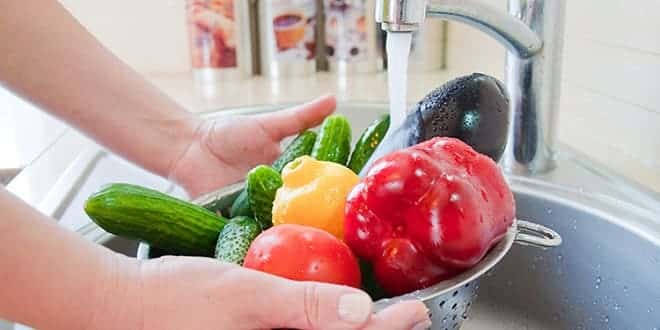Processing Equipment Cleaning and Sanitation
SANITATION STANDARD OPERATING PROCEDURE – Processing Equipment Cleaning and Sanitation
INTRODUCTION
Clean and sanitized processing equipment and utensils are essential to the manufacture of safe food products. Processing equipment is cleaned after each day’s run and sanitized immediately prior to the next use. Most equipment in a dairy plant is cleaned-in-place (CIP) using a computer controlled multi- step system. Items that cannot be cleaned with the CIP system must be cleaned and sanitized after each use by hand or in a COP (cleaned out-of-place) tub.
MATERIALS
1. Supplies
a. Cleaning and sanitizing agents
b. Cleaning equipment such as gloves, brushes, buckets, and foam sprayers
c. COP tub
d. Sanitation test records
2. Hazards
a. Burns from hot water and hot metal parts
b. Chemical burns to the skin and eyes from exposure to cleaners and sanitizers. Wear gloves and goggles when using the concentrated chemicals. Avoid breathing the vapors.
HAND CLEANING PROCEDURE
1. Utensils and items that cannot be adequately cleaned with the CIP system must be hand washed.
2. These items are dismantled and pre-rinsed with water to remove the heavy soil, then hand scrubbed using a chlorinated alkaline detergent, and rinsed again with water. Wire screens must be autoclaved following hand washing.
3. The cleaned items are reassembled and sanitized prior to use using the CIP sanitizing circuit if possible or dipped in a sanitizing solution.
CLEANED OUT-OF-PLACE PROCEDURE
1. Dismantle equipment to be cleaned and rinse with water.
2. Place the parts in a COP tub and fill the tub with approximately 150 to 200 gallons of water.
3. Turn the circulation pump on and heat the water to 170°F.
4. Slowly add the necessary amount of chlorinated alkaline cleaner.
5. Collect a sample of the cleaning solution and test the alkalinity and chlorine concentrations.
6. Circulate hot water and cleaner for at least 30 minutes.
7. Allow the COP tub to empty into a floor drain.
8. Rinse the equipment with an approved sanitizer.
9. Visually inspect each piece of equipment for possible damage and the presence of residual cleaner.
10. Reassemble the equipment and return it to its storage area.
OPERATION OF THE RAW CIP CIRCUIT
1. The raw CIP circuit is used to clean the milk delivery truck, the raw milk silo, the raw milk receiving lines and pump as well as the raw lines leading to the processing plant. Additionally, the two mixing tanks and the Breddo Liqwifier are cleaned and sanitized using the raw CIP circuit.
2. If needed, the equipment is pre-rinsed with water to remove most of the residual product.
3. The necessary line connections are made and the raw CIP program is activated.
a. The first step is a water rinse
b. Then water is heated and a chlorinated alkaline detergent is added. This solution is circulated throughout the circuit while valves and agitators are periodically pulsed to aid in soil removal.
c. The wash cycle is followed by a water rinse which cools down the circuit.
…




